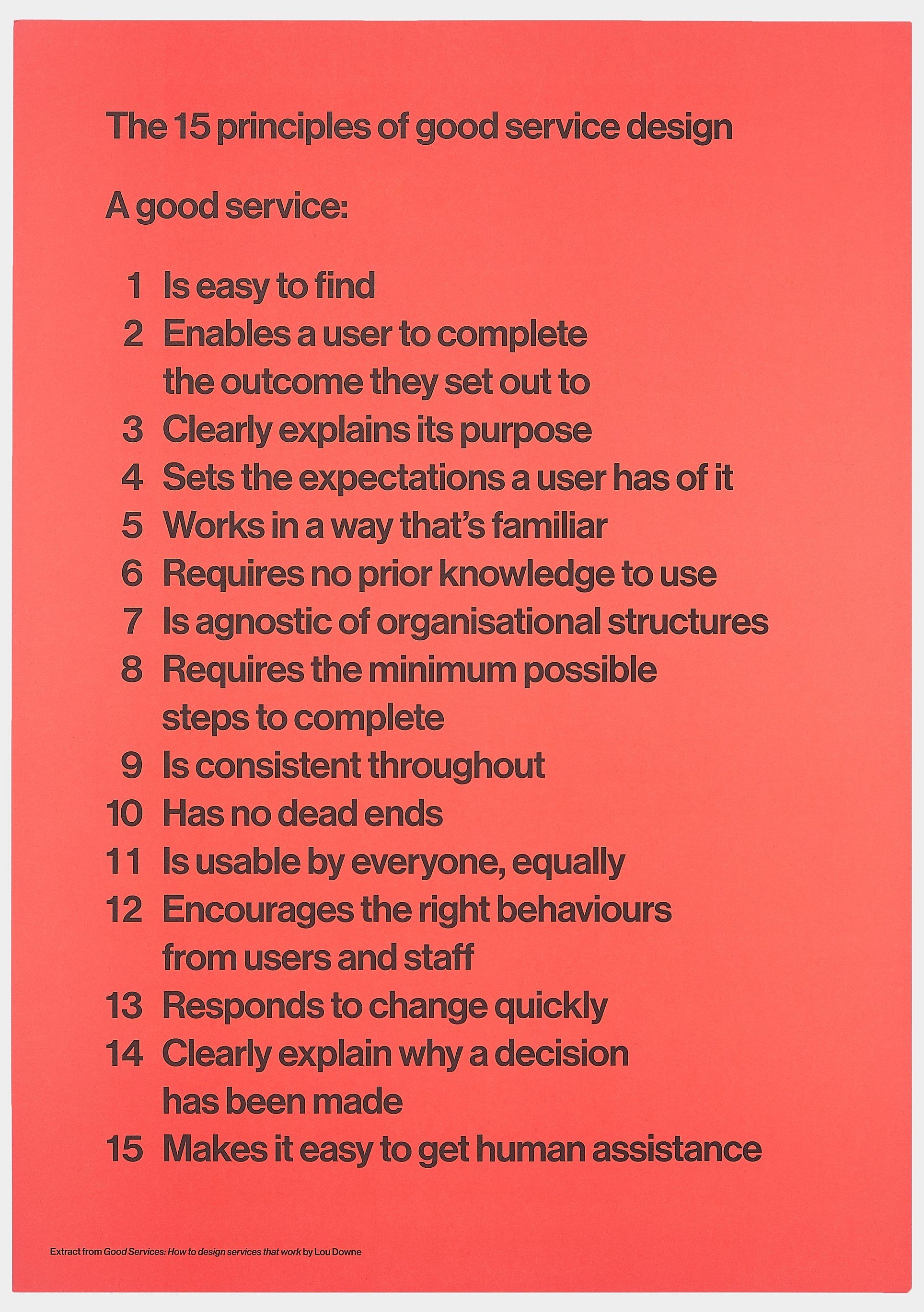15 principles of Good Service Design
13. Respond to change quickly
The service should respond quickly and adaptively to a change in a user’s circumstance and make this change consistently throughout the service. For example, if a user changes their phone number online, their new phone number should be recognised in a face-to-face service
What this means in practice
Your service responds quickly to the changing needs and circumstances of your user and works on the assumption that nothing is fixed – making it easy for users to change things about themselves and let you know easily
You’ve achieved good when
A user can experience massive or minor changes in their life and their experience of your service responds promptly and proportionally
How to do it
Make a list of all the changes that might happen to a user when using your service and work out which ones need to be directly designed for as functionality, and which don’t
For changes that directly affect the way your service works (for example, you're providing a mortgage service and your becomes unemployed) always give users the option of doing this at the point that this information becomes relevant, but always make sure they’re aware of who knows about this change and what that information will be used for
Not all change should be universal; always give users the ability to share only what they want to share with the people they want to share it with


